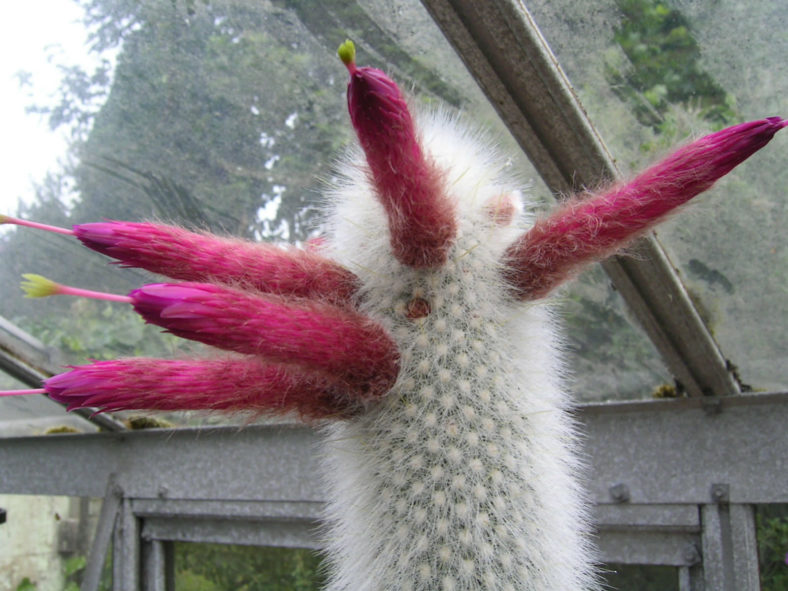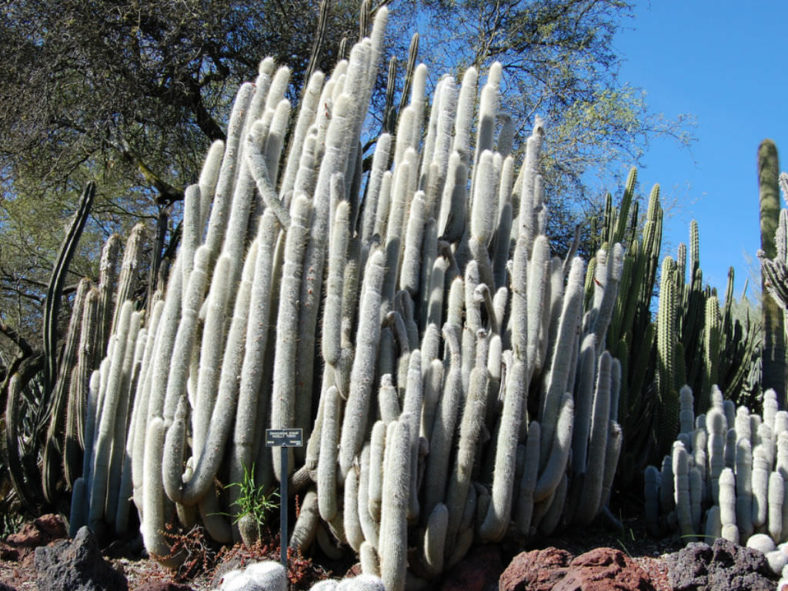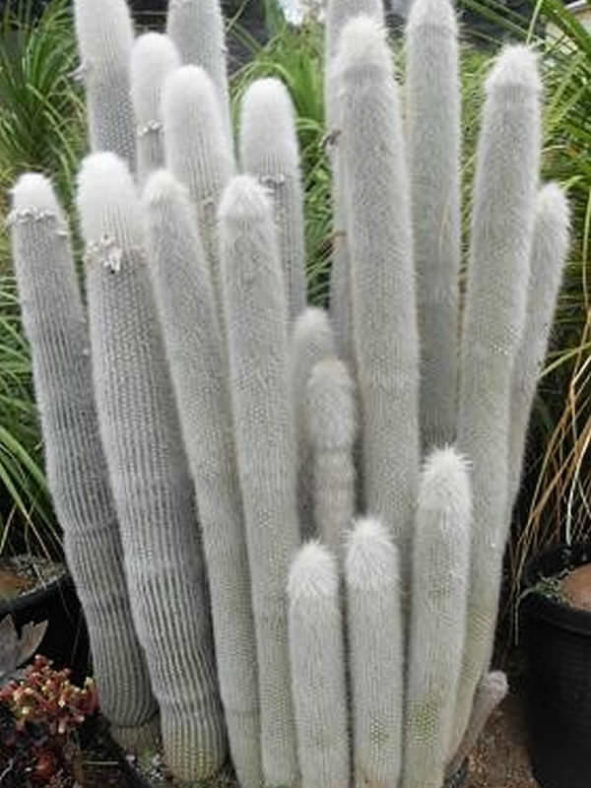Scientific Name
Cleistocactus strausii (Heese) Backeb.
Common Name(s)
Silver Torch, Silver Torch Cactus, Snow Pole, Wooly Torch
Synonym(s)
Pilocereus strausii
Scientific Classification
Family: Cactaceae
Subfamily: Cactoideae
Tribe: Trichocereeae
Genus: Cleistocactus
Etymology
The specific epithet "strausii" (pronounced "STROU-see-eye") honors L. Straus (1862-1934), a German merchant and cactus lover from Bruchsal and co-founder of the German Cactus Society.
Origin
The native range of Cleistocactus strausii is in the high mountain region of the Tarija Department in Bolivia at elevations between 4,920 and 9,840 feet (1,500 and 3,000 m).
Description
Cleistocactus strausii is a columnar cactus with slender, cylindrical, grey-green stems with around 25 ribs and densely covered with areoles and clusters of spines. The stems can grow up to 10 feet (3 m) tall and only about 2.5 inches (6 cm) in diameter, often branching at the base. Each areole bears 4 yellow-brown central spines and 20 shorter, white radial spines. The central spines can measure up to 2 inches (5 cm) in length.
Older plants, over 18 inches (45 cm) tall, produce deep red to burgundy flowers in late summer. The flowers are cylindrical, and emerge horizontally and radially from the stem. They can reach a length of up to 3.2 inches (8 cm).

Hardiness
USDA hardiness zones 9a to 11b: from 20°F (-6.7°C) to 50°F (10°C).
How to Grow and Care
Choose a location that gets full sun and has well-draining soil. Water your Cleistocactus during the spring and summer when the top inch (2.5 cm) of soil dries out. During the fall, reduce watering to every five weeks if the ground dries. In winter, keep Cleistocactus dry, or the moist ground combined with the cool temperatures and dormancy may cause the roots to rot. Fertilize Cleistocactus with a low-nitrogen fertilizer during the active growth period. A slow-release fertilizer applied in the spring will be sufficient for the whole year.
It is possible to propagate by cutting a small branch from a Cleistocactus and rooting it, but this inevitably leaves a disfiguring scar near the main stem's base. If an offset is removed for propagation, remember to let it dry for a week or so, allowing the wound to heal.
See more at How to Grow and Care for Cleistocactus.
Links
- Back to genus Cleistocactus
- Succupedia: Browse succulents by Scientific Name, Common Name, Genus, Family, USDA Hardiness Zone, Origin, or cacti by Genus
Photo Gallery
Click on a photo to see a larger version.

